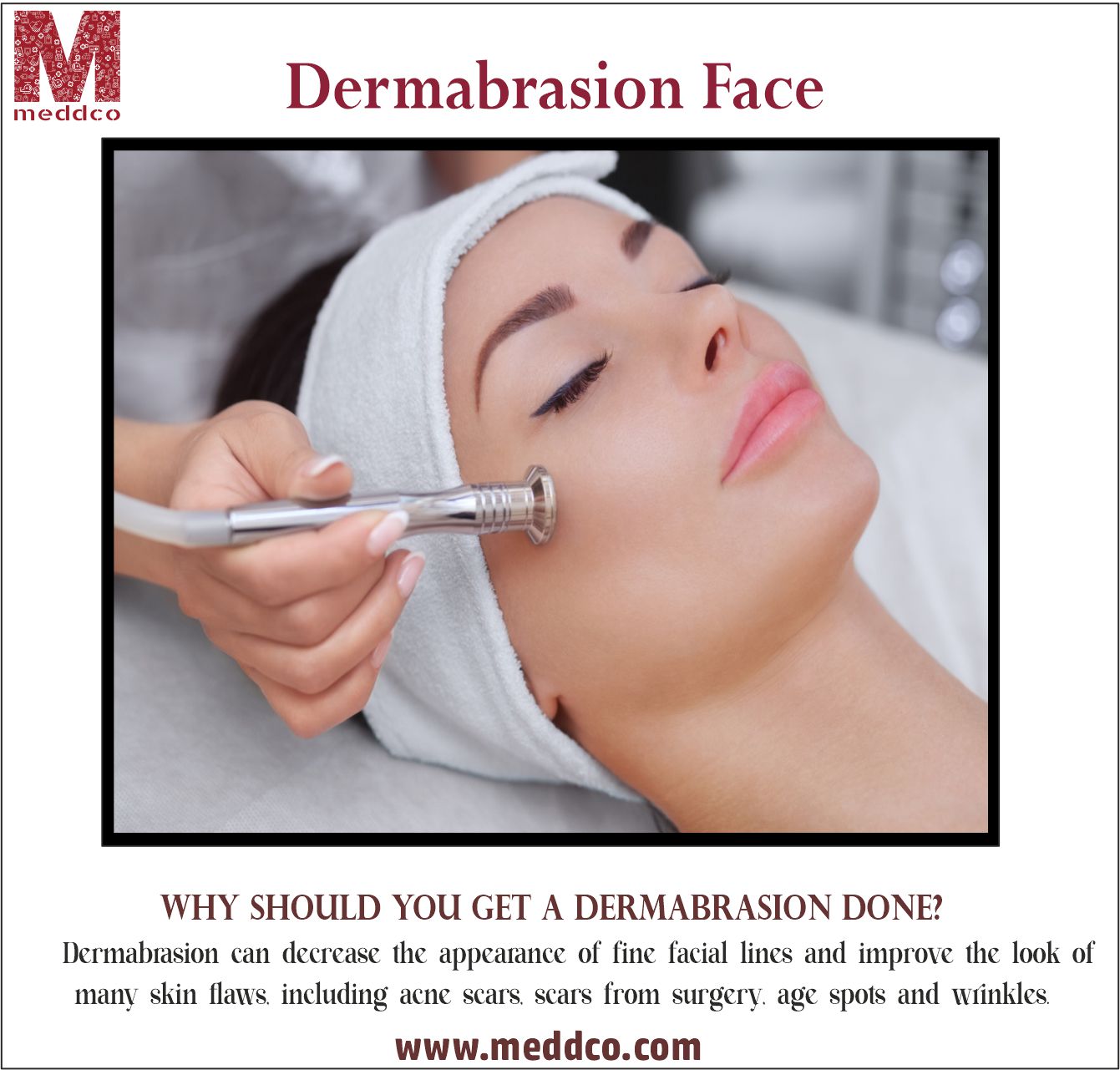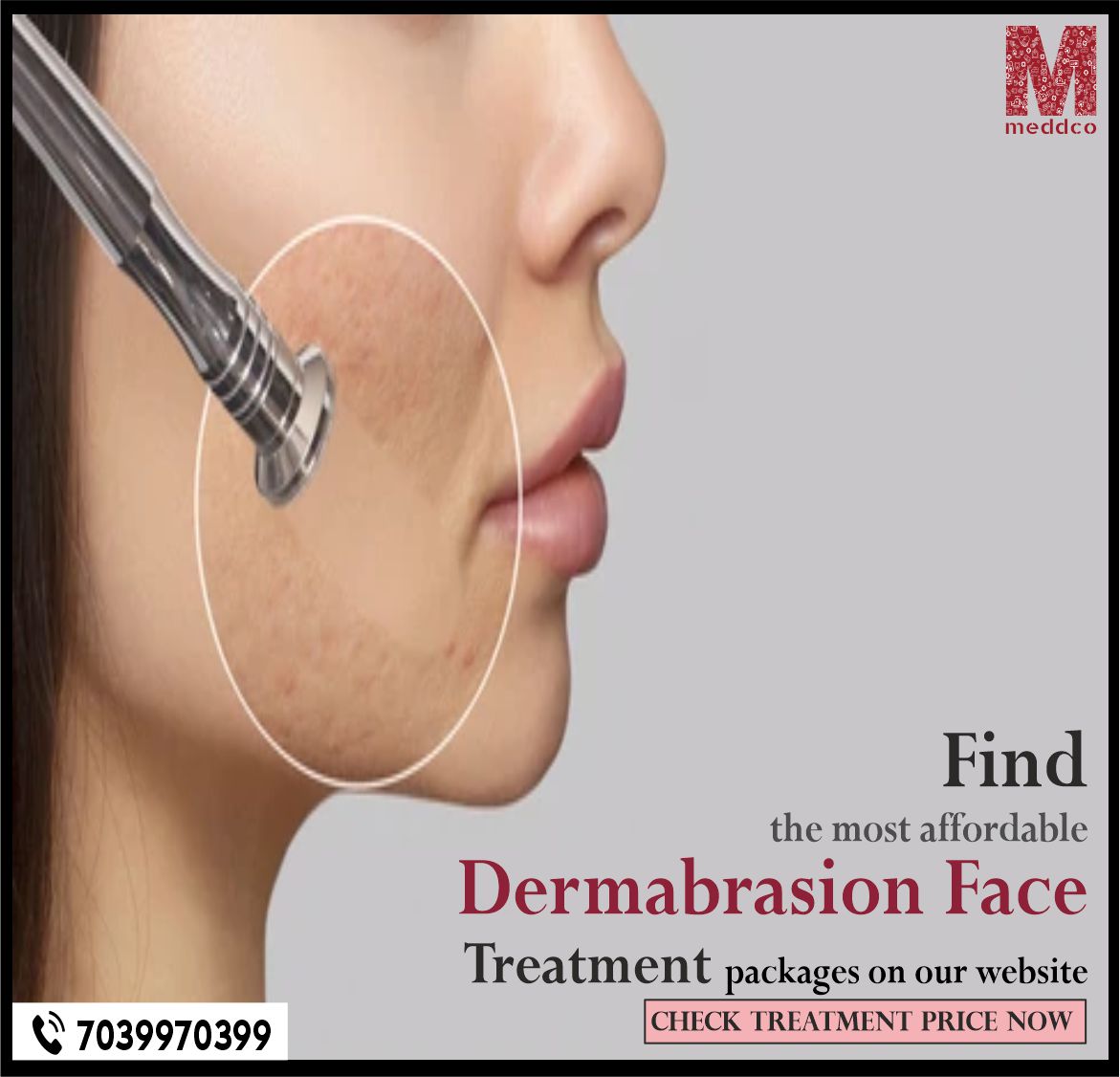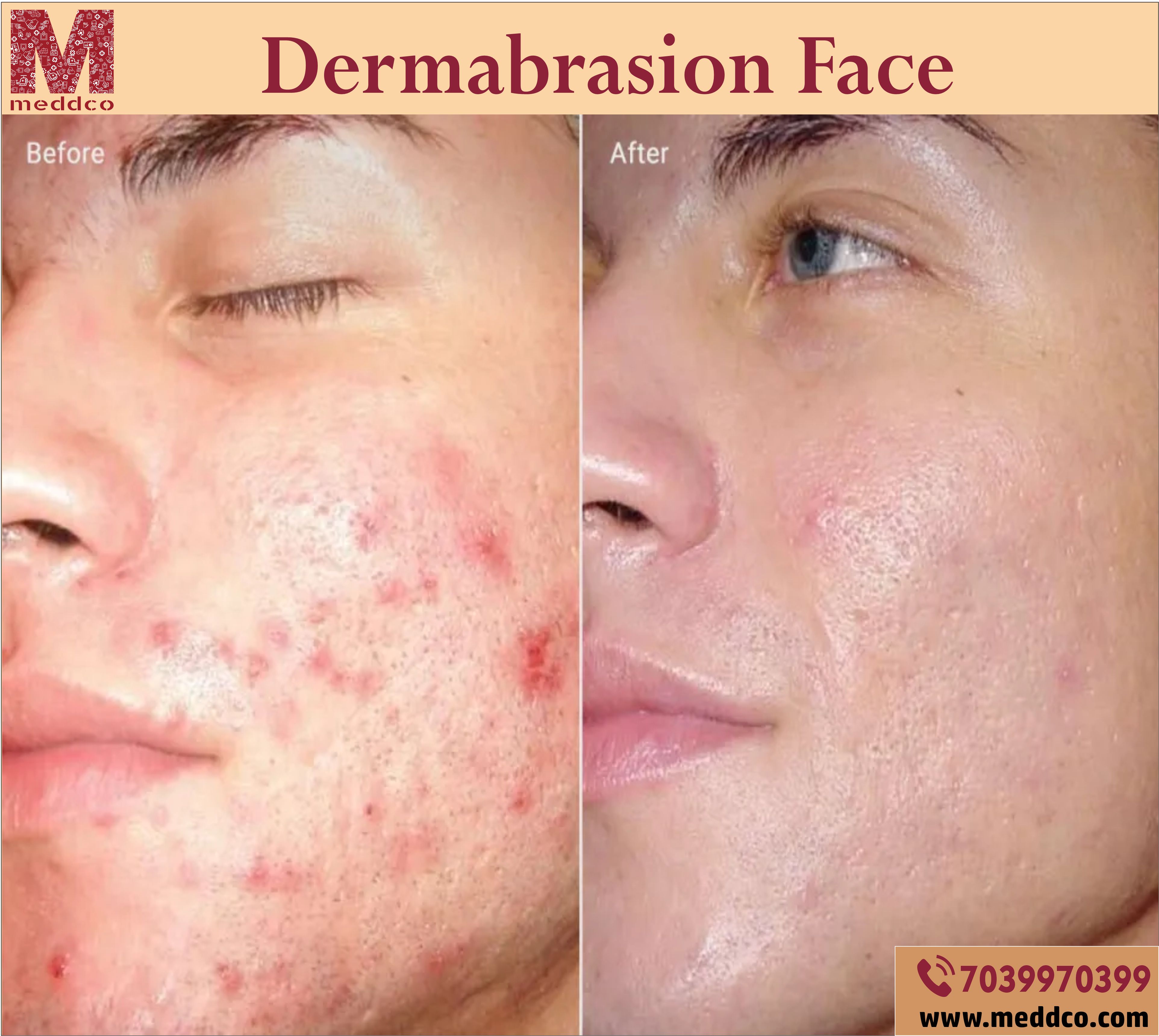

: Admin : 2022-03-30
What exactly is dermabrasion?
Dermabrasion is a skin resurfacing procedure used to treat facial scars. When it was initially created in the early 1950s, it was mostly used to treat acne scars, chickenpox markings, and scars caused by accidents or sickness. Dermabrasion is now utilized to treat deep facial lines and wrinkles, severe sun damage, pigmentation issues, and some skin lesions.
Dermabrasion Preparation
Before you may have a dermabrasion, your doctor will conduct a thorough medical history and inspect the skin lesion or defect. The following information will be required by the doctor:
Skin type — A mid-range skin type (III-IV) that tans readily is more likely to have transitory hyperpigmentation (dark markings) 4-8 weeks after surgery and hypopigmentation (pale marks) 12-18 months afterwards. However, discolouration may be an issue for people of all skin types.
A tendency to create keloids (fibrous tissue deposits) or hypertrophic scarring — individuals with a history of keloid formation may need a test spot before undergoing full-face resurfacing.
Herpes simplex lesions (cold sores) - an active herpes infection typically demands deferring the surgery until the lesions have healed.
Acne, rosacea, and dermatitis are examples of active facial skin conditions that may flare up after dermabrasion.

Recent isotretinoin treatment — might cause scarring and impede recovery, thus dermabrasion should be avoided for 6-12 months.
The doctor will explain the process, the risks and problems, and what outcomes may be reasonably anticipated. Photographs are often taken before and after surgery to assist in determining the degree of improvement.
What Benefits Does Dermabrasion Have for Your Skin?
A Dermabrasion may benefit your skin in a variety of ways, including:
Getting rid of fine lines and wrinkles
It may be used to treat acne scars as well as other forms of acne.
Reduces the appearance of freckles, age spots, and dark areas
Dermabrasion may help to balance out skin tone.
Make your skin feel revitalized and younger-looking.
Enhances the look of minor scars
It aids in the removal of tattoos and the smoothing out of skin where a tattoo formerly existed.
Reduces the appearance of sun damage and has the potential to eradicate precancerous skin spots.
What Exactly Happens During a Dermabrasion Facial?
Anaesthesia is utilized during the process, although its amount is determined by the cause of your therapy. Typically, your surgeon will provide a moderate anaesthetic to you, but in certain circumstances, if the processor area of emphasis may take longer, you may need sedation to help you feel sleepy and comfortable.
An assistant will hold the targeted skin tight as the surgeon runs an electrical instrument called a dermabrader over your skin during the dermabrasion treatment. The device is tiny and motorized, having a rough surface to aid in the removal of the skin's superficial layers. The device's head may change depending on the size of the targeted region; a circular dermabrader is used on larger patches of skin, while a tiny tip is used on smaller patches.
Following the completion of the procedure, the surgeon will apply the moist dressing to the skin to aid in the healing process. This dressing is often changed during the next day's checkup. You will then be shown how to change the dressing quickly, and you should be able to resume your usual routine within two weeks.

Dermabrasion medical therapy
Dermabrasion may cause herpes simplex infection, resulting in painful blistering and probably permanent scarring; thus, aciclovir, famciclovir, or valacyclovir pills are taken to prevent it. Those who have had a history of cold sores may need higher doses than usual.
Most patients are only given antibiotics if they become infected after the procedure. Immunocompromised individuals, those with a recent history of impetigo, or those who are carriers of Staphylococcus aureus, may be started on antibiotics ahead of time.
Dermabrasion may be done under general anaesthesia, however, for tiny regions, local anaesthesia may be recommended. Prior to and after surgery, sedative medicines may be used to generate a relaxing effect.
Dermabrasion treatment
Dermabrasion may need hospitalization or be performed as an outpatient procedure in a hospital The method starts by carefully washing the area to be sanded' using an antiseptic cleaning chemical. To freeze and stiffen the area being treated, a numbing spray might be used. The doctor will next gently slide the dermabrasion tool over the region to remove layers of skin until he or she achieves the appropriate level that will make the scar or wrinkle less apparent, with the goal of avoiding additional scarring.
The method should just take a few minutes for minor regions. The procedure can take 1-2 hours to complete for larger areas.
After-Dermabrasion Care
The treated skin will be red, puffy, and sensitive after the operation. To decrease any tingling, burning, or stinging sensations and to speed up healing, a compressor special dressing is frequently administered. Instructions on how to care for the wound will be provided until new skin begins to form, which normally takes 7-10 days. For many weeks following dermabrasion, the face may itch as new skin forms and be somewhat puffy, sensitive, and bright pink.
Results
You should anticipate your skin to become pink and feel like it's burning or tingling after the dermabrasion operation. There is also a chance that the skin may crust over throughout the healing process and that a clear or yellow liquid will seep from the treated region. It might take up to three months for your skin to completely heal, and once it does, you should see and feel smoother, cleaner skin with a much better tone.
Complications and Risks
The risks and hazards associated with dermabrasion facials are comparable to those associated with other surgical treatments. Bleeding, infections or adverse response to the anaesthetic are all possibilities. The following are the hazards associated with dermabrasion:
cosmetic surgery treatment surgery dermabrasion dermabrasion of face skin dark skin area skin tone
No Comments